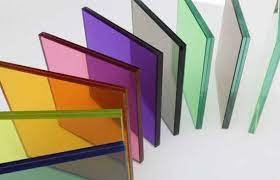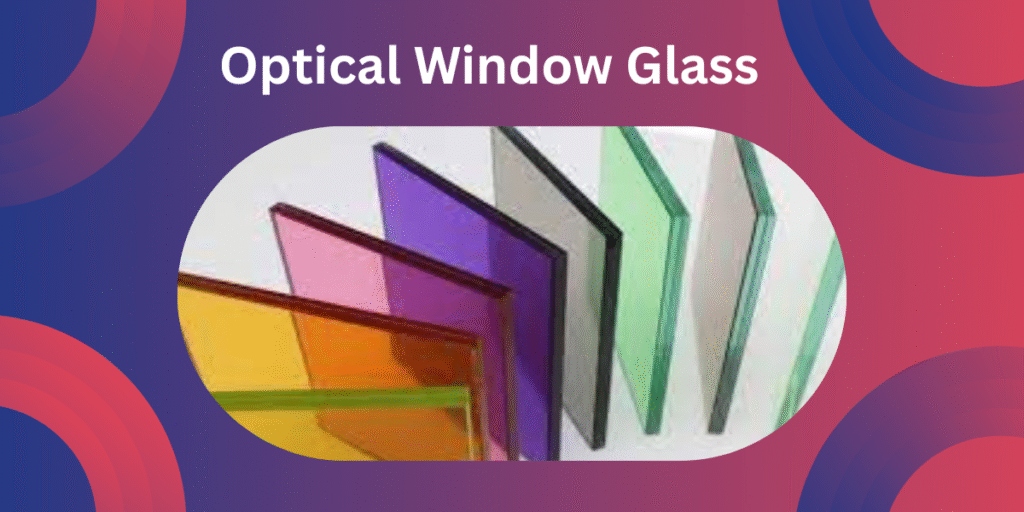Filter glass is a crucial component in the optical industry. It is specifically engineered to control, block, or transmit light at precise wavelengths. Unlike regular transparent glass, optical filter glass is designed to allow specific colors of light to pass through while blocking others. This makes it highly effective in applications such as photography, medical devices, laser systems, and scientific instruments.
In this article, we will explore the types of optical filters, their properties, manufacturing processes, and common applications in various industries. This comprehensive guide will offer a complete understanding of why optical filters are indispensable in advanced optical technology.
What is Filter Glass?
Filter glass is a type of optical material that modifies the transmission of light. It is made by adding chemical compounds and coatings to control which wavelengths are absorbed or transmitted. Unlike plastic filters or coatings, glass filters are known for their durability, heat resistance, and suitability for precision optical work.
Some primary functions of optical filter glass include:
- Absorbing harmful ultraviolet (UV) radiation
- Blocking infrared (IR) radiation
- Enhancing specific colors in imaging systems
- Providing optical clarity for scientific measurements
Related Keywords: UV optical filters, infrared blocking glass, precision optical filters, optical materials
Types of Filter Glass

Filter glass comes in a wide range of types, depending on the light spectrum it controls. Below are the most common categories:
1. UV Filter Glass
- Blocks harmful ultraviolet rays
- Common in sunglasses, cameras, and scientific instruments
- Protects sensors and human eyes from UV damage
2. Infrared (IR) Glass
- Blocks infrared radiation while transmitting visible light
- Used in night vision systems, laser systems, and thermal imaging equipment
3. Neutral Density (ND) Filter Glass
- Reduces light intensity across all wavelengths equally
- Allows photographers to control exposure without changing colors
- Used in photography, cinematography, and optical testing
4. Color Filter Glass
- Transmits a specific color while blocking others (e.g., red, blue, green)
- Widely used in stage lighting, optical instruments, and cameras
5. Heat Absorbing Glass
- Removes infrared rays that cause heat
- Common in projectors, lighting systems, and laser equipment
6. Bandpass Filter Glass
- Allows only a narrow band of wavelengths to pass through
- Essential in scientific experiments, laser optics, and spectroscopy
Properties of Filter Glass
To understand why filter glass is so effective in optical applications, let’s explore its unique properties:
- High Optical Clarity – Provides accurate light transmission with minimal distortion.
- Wavelength Selectivity – Filters can block or pass light within specific wavelength ranges (UV, visible, IR).
- Durability – Glass filters are more scratch-resistant and heat-resistant compared to plastic filters.
- Thermal Stability – Can function under high temperatures without compromising performance.
- Chemical Resistance – Resists solvents, cleaning agents, and environmental exposure.
Related Keywords: optical clarity, scratch-resistant glass, wavelength selectivity, glass optical filters, high-performance filters
How Filter Glass is Manufactured
The manufacturing process of filter glass is highly precise and requires several stages to achieve the desired filtering properties.
Step 1: Raw Material Selection
- Glass is mixed with elements like iron, cobalt, or rare earth compounds
- These materials control the absorption of specific wavelengths of light
Step 2: Melting and Mixing
- Raw materials are melted at high temperatures to form a homogeneous mix
- Special additives are blended to give the filter glass its optical properties
Step 3: Shaping and Cooling
- The molten glass is shaped into sheets, lenses, or custom parts
- Controlled cooling is essential to avoid internal stress or distortion
Step 4: Polishing and Coating
- Glass surfaces are polished for optical clarity
- Some filters receive coatings to increase transmission efficiency
Step 5: Quality Testing
- Each batch is tested for transmission spectrum, durability, and precision to ensure the glass meets the highest optical performance standards
LSI Keywords: optical manufacturing, glass shaping, coating technology, glass polishing, precision optical materials
Applications of Filter Glass
Filter glass is used extensively in several industries. Below are the major applications:
1. Photography and Cinematography
- Enhances color balance
- Reduces glare and unwanted reflections
- Protects camera sensors from UV and IR radiation
2. Medical Equipment
- Used in diagnostic devices like microscopes
- Essential for laser surgery to control harmful wavelengths
3. Scientific Research
- Bandpass and ND filters are vital in spectroscopy and laboratory experiments
- Improves accuracy and light control in optical instruments
4. Industrial Uses
- Laser cutting machines use IR and UV filters for safety
- Lighting systems use heat-absorbing filters to prevent overheating
5. Consumer Electronics
- Smartphones and projectors use filter glass for image clarity
- Sunglasses and protective eyewear incorporate UV filter glass
6. Defense and Aerospace
- Night vision goggles and thermal imaging rely on IR filters
- Optical systems in satellites use specialized filter glass
LSI Keywords: optical imaging, industrial filters, UV protection, IR filter technology, night vision
Advantages of Using Filter Glass
- Precise control over light transmission
- Long-lasting and scratch-resistant
- Performs well in high-temperature environments
- Available in customized designs for specific wavelengths
Future of Filter Glass
As industries evolve with advancements in AR/VR, laser technologies, and advanced imaging, the demand for high-performance filter glass continues to rise. Manufacturers are now focusing on:
- Thinner, lighter filters for portable devices
- Eco-friendly materials that offer enhanced durability
- Advanced coatings for higher efficiency in optical systems
LSI Keywords: AR/VR filters, laser optics, eco-friendly optical materials, advanced coatings
Conclusion
Optical filter materials are much more than just essential components; they form the backbone of modern light control systems. From photography filters and medical optical devices to scientific instruments and military optics, filter glass plays a crucial role in improving performance. Its various types, distinct optical properties, and precise manufacturing processes make it a reliable solution for light transmission control in precision optical systems.
As industries continue to innovate, filter glass will remain a key element in the future of optics, lasers, and imaging technologies.

